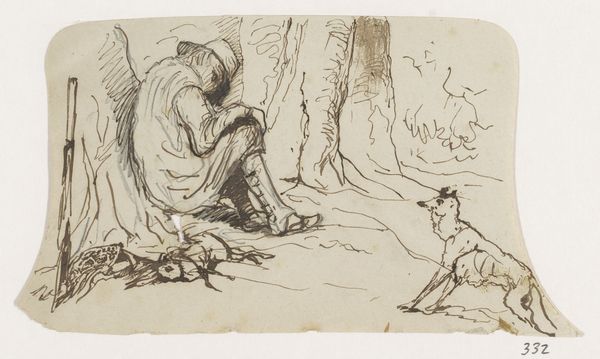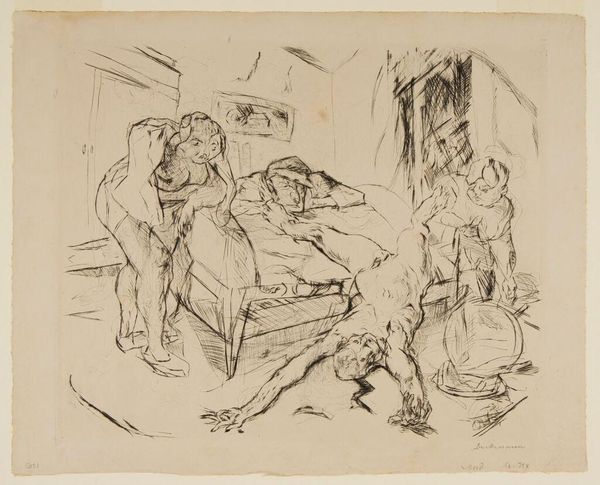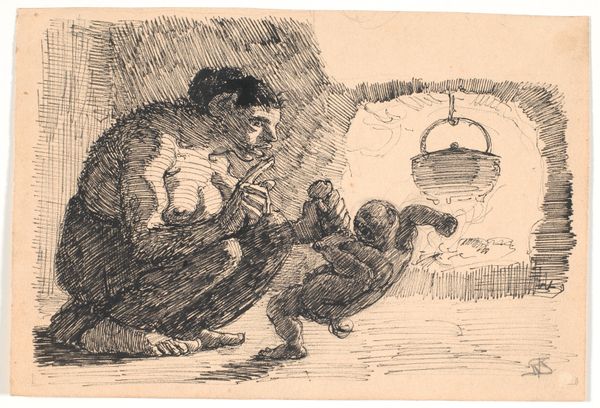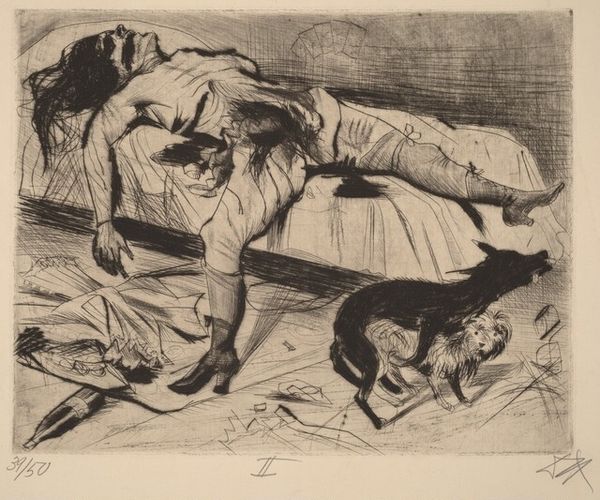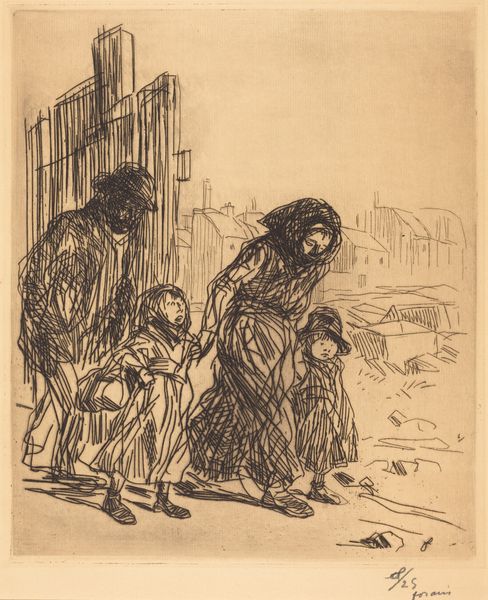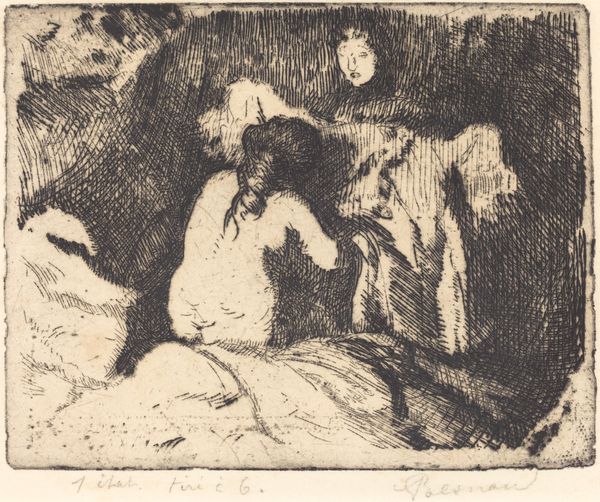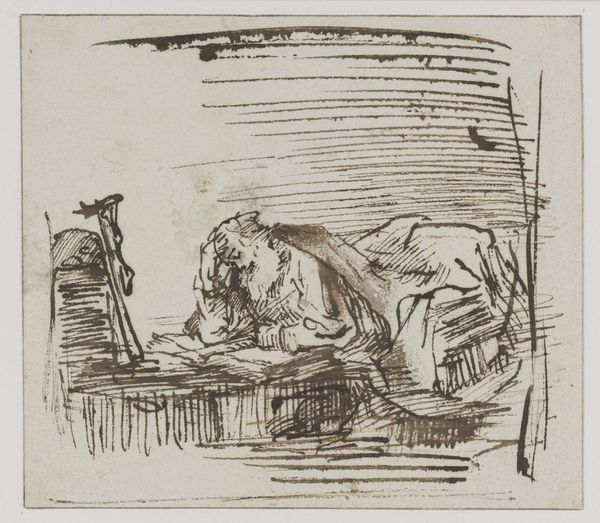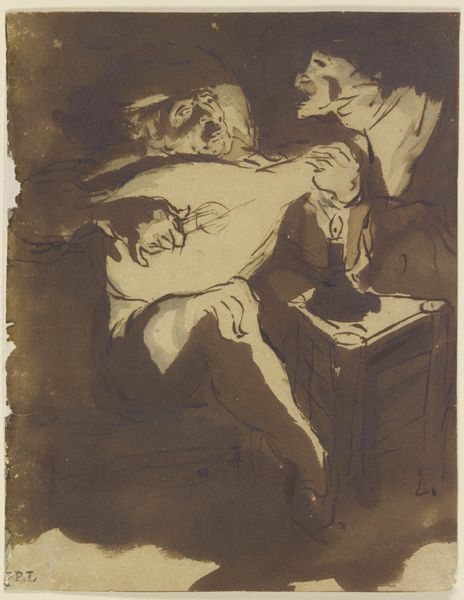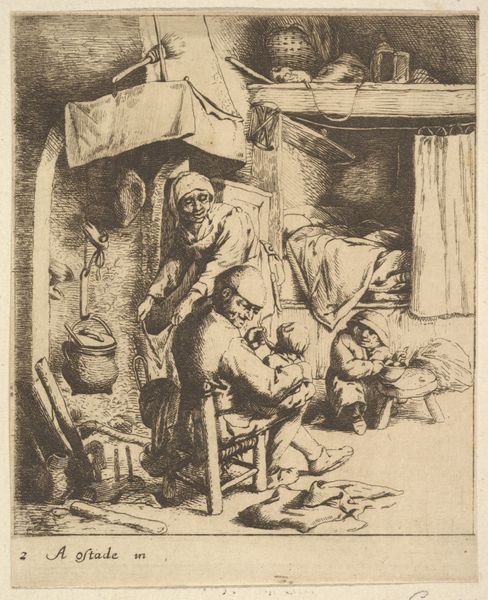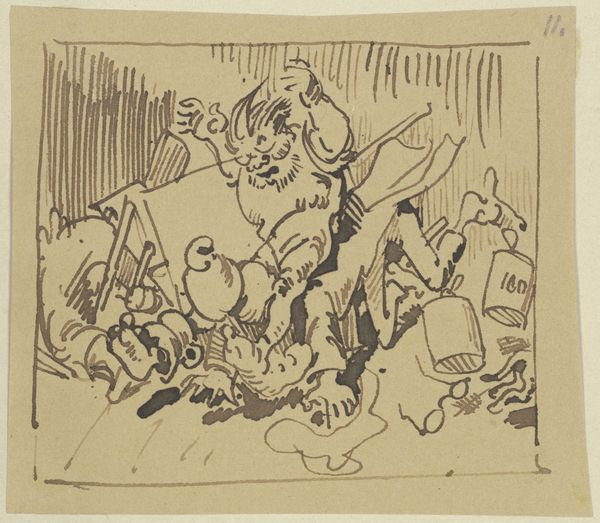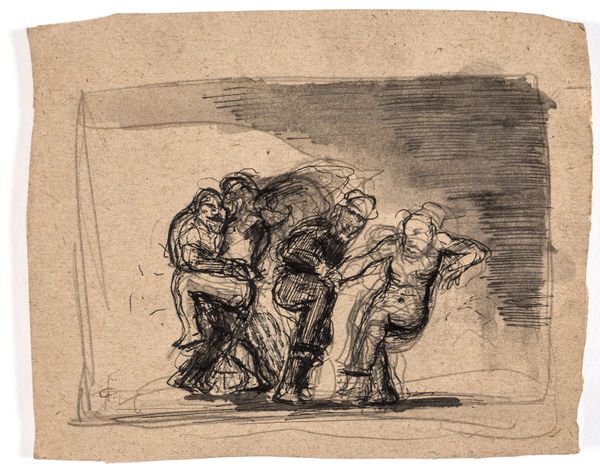
drawing, ink, pencil
#
portrait
#
drawing
#
imaginative character sketch
#
quirky sketch
#
landscape
#
cartoon sketch
#
figuration
#
personal sketchbook
#
ink
#
idea generation sketch
#
character sketch
#
ink drawing experimentation
#
pencil
#
sketchbook drawing
#
genre-painting
#
storyboard and sketchbook work
#
sketchbook art
Dimensions: height 116 mm, width 151 mm
Copyright: Rijks Museum: Open Domain
Editor: We're looking at "Resting Man," a drawing in ink and pencil by Johannes Tavenraat, dating from 1868 to 1869. It’s housed at the Rijksmuseum. There's something quite affecting about the subject's posture, a kind of world-weariness, don’t you think? What strikes you most about this piece? Curator: Well, drawings like this provide crucial insights into 19th-century social dynamics. Think about the period—massive urbanization, industrialization... The 'resting man' isn’t just taking a break. It could reflect the plight of the working class, the fatigue and disenfranchisement arising from the shift from rural to urban life. Editor: That’s interesting. I hadn’t considered the socio-economic angle. Is that small flask to the left suggesting something further about this figure? Curator: Absolutely. It gestures towards the societal dependence on alcohol to cope with these brutal conditions, offering fleeting respite. But consider, too, the act of observation and artistic creation itself. What does it mean that Tavenraat, likely from a more privileged background, is choosing to depict this subject? Is it social commentary? Editor: So you're suggesting this artwork functions almost as a social mirror? Curator: Exactly. Art both reflects and shapes social values. This "Resting Man" gains a public role and acquires power. Think how the Rijksmuseum's choices now impact our interpretations. It brings attention to marginalized figures, fostering, hopefully, critical dialogue around labor, class and even access to leisure. Editor: This drawing feels so much richer now. Thank you. I had focused purely on the art's technical aspects. Curator: And thank you. It is always worth to analyze artwork through a wide angle; your technical viewpoint, after all, brings also its own important value to the stage.
Comments
No comments
Be the first to comment and join the conversation on the ultimate creative platform.
